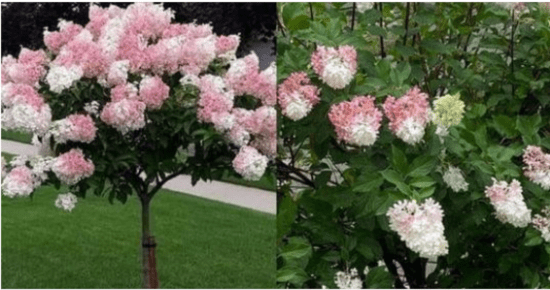Hydrangea trees are a stunning addition to any garden, offering beautiful blooms and a touch of elegance. While growing these trees may seem daunting, it’s actually quite straightforward. With the right guidance, you can enjoy the beauty of hydrangea trees in your own garden.
To start, it’s essential to choose the right variety of hydrangea tree. Some popular options include Hydrangea paniculata ‘Grandiflora’, ‘Limelight’, ‘Big Ben’, ‘Bobo’, and ‘Pinky Winky’. Each variety offers unique characteristics, such as different bloom colors and growth habits.
Pruning is a crucial aspect of maintaining a healthy hydrangea tree. To prune effectively, trim your tree during late winter or early spring, before new growth begins. Thinning out the shrub to five to ten main stems will promote larger flower clusters. If you prefer a single trunk, choose a main stem and attach it to a sturdy stake, removing any competing ground stems and buds.
Propagating hydrangea trees is also relatively simple. You can do this by taking cuttings from a healthy stem that hasn’t bloomed yet. Remove the lower leaves, cut the remaining leaves in half lengthwise, and dip the cuttings in rooting hormone. Plant the cuttings in small containers filled with vermiculite or coarse sand, and keep the soil slightly moist.
While growing hydrangeas from seeds is possible, it can be challenging. Most gardeners prefer propagating by cuttings. However, if you’re interested in trying your hand at seed growth, allow some flowers to develop on the plant, harvest them, and let them dry in paper bags. Sow the seeds directly into the ground in fall or start sowing indoors in early spring.
When it comes to caring for your hydrangea tree, it’s essential to provide the right conditions. Hydrangeas prefer full sun and partial shade, depending on the climate. Keep the soil moist but not overly wet, and avoid letting it dry out completely. Hydrangeas also prefer slightly acidic soil, but they can tolerate alkaline soils as long as they’re well-drained and rich in organic matter.
Fertilizing your hydrangea tree is also important. Fertilize once in early spring and again after the flowers fade in autumn. Adding compost in summer can also promote healthy growth.
By following these simple tips, you can enjoy the beauty of hydrangea trees in your own garden. With their stunning blooms and elegant presence, hydrangea trees are sure to bring joy and serenity to your outdoor space.


